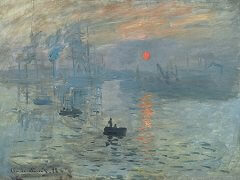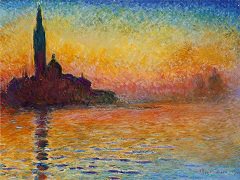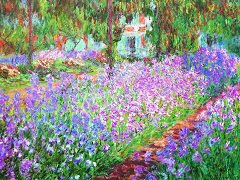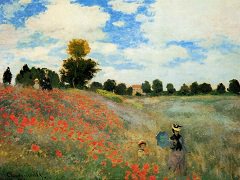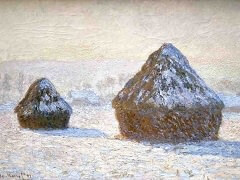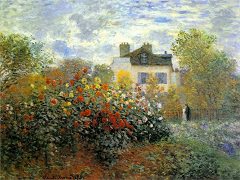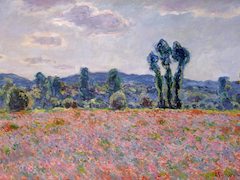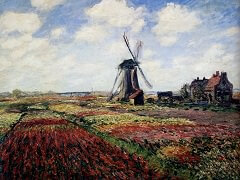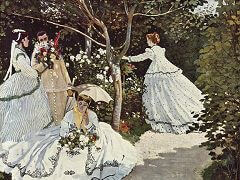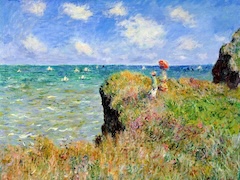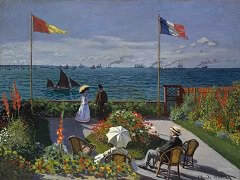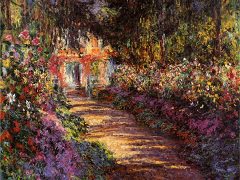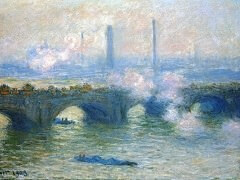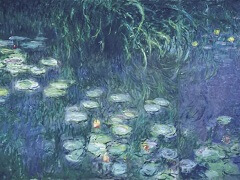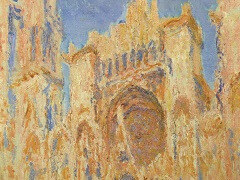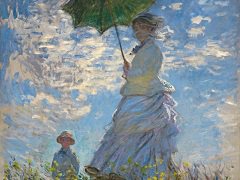Le Bassin Aux Nymphéas, 1919 by Claude Monet
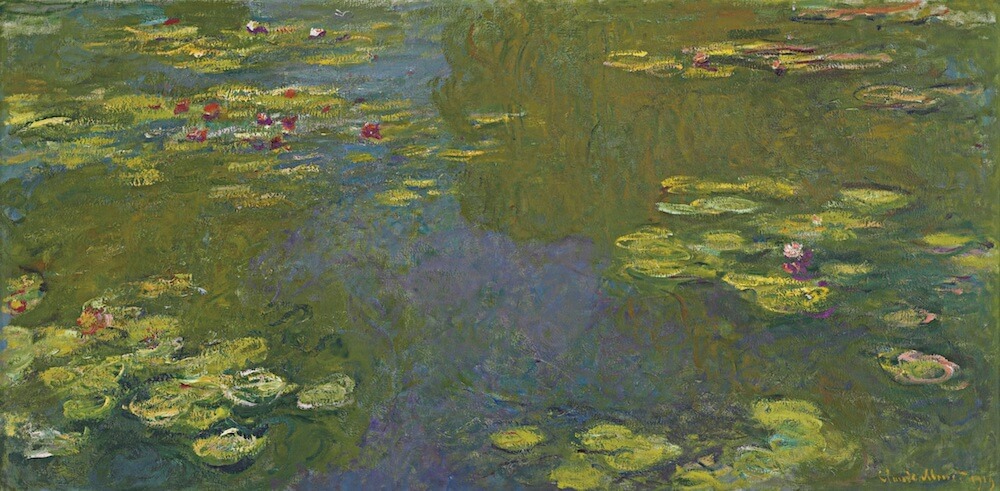
Monet returned time and again to his garden for inspiration. Between the years 1903 and 1908 he had painted numerous canvases of water lilies-48 were exhibited by Durand-Ruel in 1909. Contemporary critics exclaimed over the beauty of the paintings. He came back to the subject towards the end of his life. In all of these paintings, Monet focuses on the surface of the water. He dispenses with any representation of the land or sky, only showing their reflection in the water.
Le Bassin Aux Nymphéas, 1919 is typical, with the willows present only as a reflection. The sky, with its white clouds, is reflected in the water, so the blue of the sky and the blue of the water are one. Only the presence of the water lilies helps the observer to understand that this is a reflection. The painting is done in such a way that it is difficult to judge depth in it, and it becomes a very flat canvas. As the sky has clouds in it, the surface of the water is hard to identify. The wispiness of the edges of clouds could be the ripples of the water. The overall effect is of a harmonized world where water and sky have truly become one, and land has almost disappeared.

